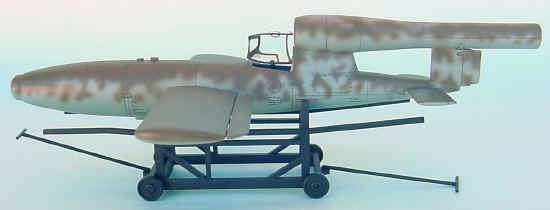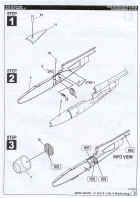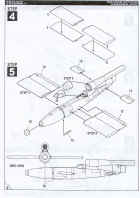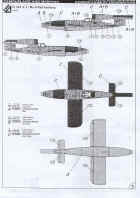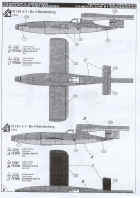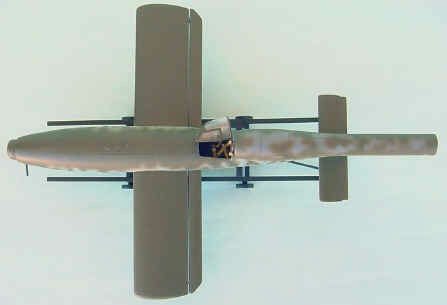 |
|
|
Airplanes |
|
|
MPM's Fieseler Fi 103 1/48 scale |
|
|
by Marcelo Scaminaci Russo |
|
|
Development from the Fieseler Fi 103 flaying - bomb, better known as the V-1 reprisal weapon, is well remembered in aviation history. A small, fixed wing, pilotless aircraft, was powered by a pulsejet engine mounted above the rear fuselage. Late in 1943, German officials were considering the use of piloted missiles to make precision attacks on high priority targets, a policy that developed quite independently of the Japanese "kamikaze" attacks. With a deteriorating situation, Adof Hitler gave the go-ahead of such a project in March 1944, and the Fi 103 was adopted for this program, which was designated Fi 103 R ( for " Reichemberg" ). Four versions were initially planned, but the Fi 103 R-IV was the production one, with a single cockpit just ahead of the pulse jet. This small aircraft had simple flight instruments in the cockpit, and the canopy had guidelines for calculating the correct dive angles for attacks. It was projected so that, after being launched from a mother plane, the pilot would aim his R-IV ( and his warhead of high explosive ) to the target and then bale out, descending by parachute; really, his chances to escape were very few. About 175 of these weapons were produced and given to be used for the 5./KG 200, " Leonidas Staffel ", but due to the low visibility that the pilot had the whole project was abandoned in October 1944.
Building Conclusion What a sexy little machine! The end results are very pleasing and the kit certainly makes a nice addition to my Luftwaffe collection.
Support us ordering our notes in PDF > Here |
|

